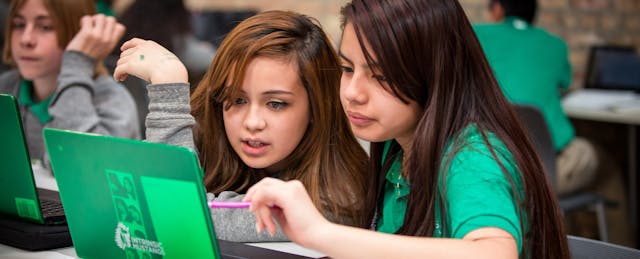Today’s students will graduate into a challenging job market, a fragmented and risky postsecondary landscape and a world of tremendously accelerating change. The challenges they encounter, and the life and career choices they will face, demand a passion for learning and skill sets in goal setting and problem solving that make their current experience in school too often seem outdated and narrow.
Many school and district leaders are ready to consider making some fundamental changes in response to these demands. But they’re finding this a tough nut to crack. Sifting through the many research-based competency frameworks swirling around them is time consuming, and deciding which student competency goals to prioritize can be overwhelming. Not to mention the challenges that come with choosing, developing, and implementing learning and assessment models that proactively help students develop the wider set of competencies they will need to thrive in the world they’re entering.
Nearly three years in development, the MyWays project from the non-profit Next Generation Learning Challenges (NGLC) is designed to make this process easier. It assembles, distills, and presents exhaustive research and practical tools organized around four essential questions that American K-12 educators should be asking right now:
- Why the urgency to change? What are the profound new realities and conditions that our schools must address now?
- How well are we defining and articulating what success looks like for students attending our school, given the changing economy and rapidly evolving society they are entering?
- How can our design for learning and the organization of our school(s) directly support students’ attainment of that richer, deeper definition of success?
- How do we gauge students’ progress in developing these competencies? And: How can we measure and articulate our school’s overall performance, beyond proficiency in math and ELA?
Some school communities are already acting on these intuitions, creating radically different school models that are explicitly designed to guide students to the new “North Star” of competencies and prepare them for learning, work, and life in the twenty-first century.
The MyWays project site offers reports, tools and resources to help school and district leaders address these four questions in ways that resonate with their local context and build on their existing strengths. These tools include discussion templates designed to help schools, districts and charter management organizations examine their current definition of success in light of the MyWays framework, which represents a distillation of more than 25 major student success frameworks. The site will also offer tools that can help teachers analyze their current teaching and learning models and approaches to assessment.
All of that said, MyWays is explicitly not designed to provide a checklist of competencies and strategies for adoption without deep reflection and adaptation by the educators putting it to use. We are firm believers that next generation learning—learner-centered, personalized, competency-based, experiential, tech-enabled, and organized around broader definitions of student success—takes root in a genuine way only when everyone involved has sufficient agency in the work to feel appropriate levels of ownership. Simply buying and implementing a personalized learning platform, incorporating a few project based learning units into an existing curriculum, or “adopting” a new success definition without deep engagement from staff is at best one early step.
The schools we studied for the MyWays project were designed, launched, or converted out of existing schools in part through competitively awarded grants from NGLC’s $45 million investments in next generation, “breakthrough” schools over the past four years. (These investments were supported by the Bill & Melinda Gates Foundation, the Michael and Susan Dell Foundation, and the Eli and Edythe Broad Foundation, among other funders.) Their leaders and teachers have worked extraordinarily hard to develop and continuously refine their models. The lessons they have learned about what these approaches look like and how to implement them have been consolidated and applied throughout the MyWays materials.
These pioneers would be quick to say that there are no shortcuts, and that the road to next generation learning environments for students begins with deep, community-wide awareness of the reasons to transform, and thrives on the commitment of everyone involved. They would also say that their school designs will never be “finished.” Improvement and openness to change are hardwired into their DNA.
It’s the same for the entire MyWays project; it will never be “finished,” either. We welcome you to join the emerging community of practice already forming among educators, researchers, policymakers, reformers and funders who are studying, adapting and applying MyWays to support their work.
It’s impossible to predict what life will be like in the 2030s and 2040s. But by providing an interoperable framework to translate the many exciting new expressions of student success developed in recent years, and by helping practitioners connect with peers who are making similarly transformational journeys, we hope to support and enable the field’s capacity—and likelihood—of reimagining itself. Only then will today’s young people be fully prepared to excel at whatever comes their way.


